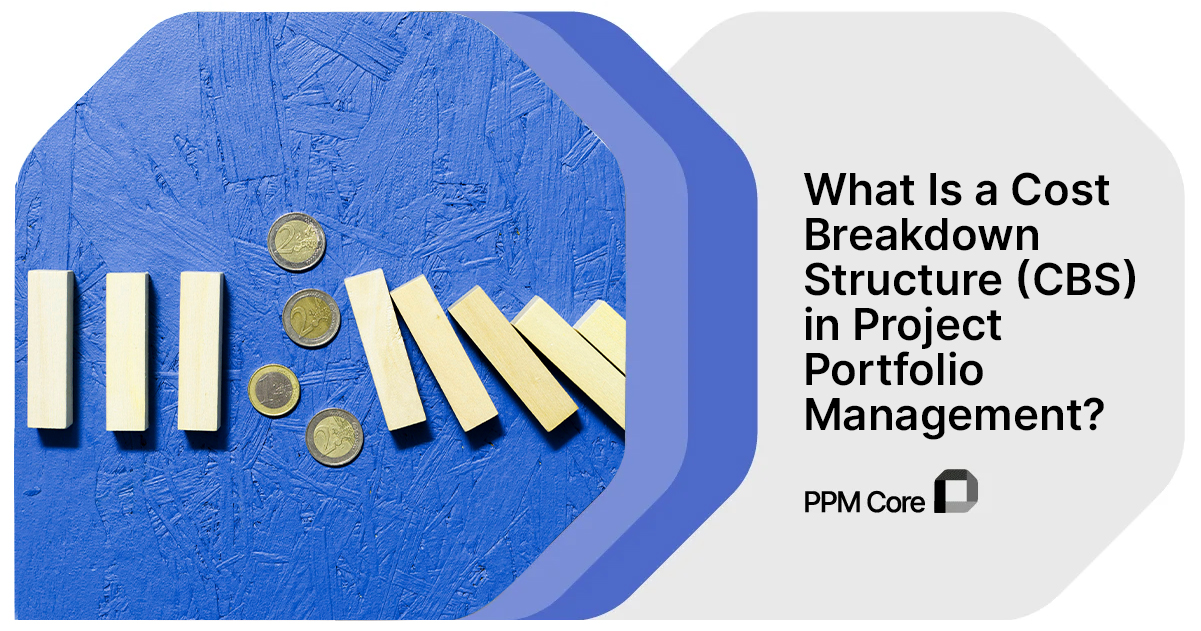Making things or building structures can be tough because it’s hard to know how much they should cost. That’s where the Cost Breakdown Structure (CBS) comes in. It’s like a special tool that helps project managers figure out the cost of making something.
For project managers, figuring out these costs is important. They need to know how much money they’ll need for materials, workers, and other things. But it’s not easy because there are so many things that can affect the cost, like the price of materials and how long it takes to finish the project.
That’s where CBS helps. It breaks down all the costs into smaller parts, like how much materials will cost and how much workers will need to be paid. This makes it easier for project managers to plan their budget and ensure they have enough money for everything they need.
In short, CBS is like a roadmap that helps project managers navigate through the complicated process of figuring out how much things should cost. With its help, project managers can make sure their projects stay on track and within budget.
What Is Cost Breakdown Analysis?
Cost breakdown analysis is a crucial process for businesses to understand the true expenses involved in bringing a product or service to market. By examining each component of production, businesses can accurately calculate the total cost and determine a competitive pricing strategy.
For businesses, setting the right price is essential for staying profitable and attracting customers. However, without a thorough understanding of all the costs involved, businesses risk underpricing their products and losing money, or overpricing them and driving away potential customers.
Cost breakdown analysis allows businesses to identify areas where costs can be optimized or reduced, such as finding more cost-effective suppliers or streamlining production processes. By breaking down costs into categories like labor, materials, equipment, and overheads, businesses can pinpoint areas of inefficiency and make informed decisions to improve profitability.
Moreover, cost breakdown analysis ensures project competitiveness by aligning prices with customer expectations and market trends. It enhances transparency, fostering trust and credibility among stakeholders.
What Is a Cost Breakdown Structure?
A Cost Breakdown Structure (CBS) is a vital tool for project managers to effectively manage project finances. It provides a detailed breakdown of all the costs associated with different parts of a project, allowing project managers to track expenses accurately and allocate resources efficiently.
By breaking down costs into smaller components, such as labor, materials, equipment, and overheads, a CBS helps project managers identify areas where costs can be optimized, and resources reallocated. This ensures that the project stays within budget and delivers value to the stakeholders.
CBS enables project managers to monitor cost performance in real-time, allowing them to make timely adjustments and mitigate financial risks. It also provides transparency and accountability, as stakeholders can easily see how project funds are being utilized.
In addition to financial management, a CBS facilitates effective communication and decision-making within project teams. By providing a clear overview of project costs, team members can better understand their roles and responsibilities, align their efforts with project objectives, and collaborate more efficiently.
Components of a Cost Breakdown Structure
To create a Cost Breakdown Structure (CBS), project managers consider four main categories of costs:
- Labor Costs: This includes the money spent on people working on the project. Whether it’s the wages of construction workers, engineers, or project managers, labor costs represent the human effort invested in the project.
- Material Costs: These encompass the expenses associated with acquiring the materials necessary for the project. This can include raw materials like wood, steel, or concrete, as well as supplies such as tools, equipment, and safety gear.
- Equipment Costs: This refers to the expenditure related to using machinery or tools required to execute the project. Whether it’s heavy machinery for construction projects or specialized tools for manufacturing processes, equipment costs are essential for project completion.
- Overhead Costs: These are the ongoing expenses necessary to keep the business running smoothly. They include items such as office rent, utilities, insurance, administrative salaries, and other overhead expenses that support the project indirectly.
By categorizing costs into these four main categories, project managers can develop a comprehensive understanding of where project funds are allocated. This breakdown enables them to track expenses accurately, identify cost-saving opportunities, and ensure that resources are utilized efficiently throughout the project lifecycle.
Cost Breakdown Structure vs Work Breakdown Structure:
Understanding the distinction between a cost breakdown structure (CBS) and a work breakdown structure (WBS) is crucial for effective project management. While both structures play key roles in project planning and execution, they serve different purposes and focus on distinct aspects of the project.

Do you find this article interesting?
Subscribe to our Newsletter for updates on the latest blog articles.
The Cost Breakdown Structure (CBS) and the Work Breakdown Structure (WBS) are two essential components of project management, but they serve different functions. The WBS defines the project’s deliverables and breaks down the work required to achieve those deliverables. It’s like a roadmap that guides the project team through the tasks and activities necessary to complete the project.
On the other hand, the Cost Breakdown Structure (CBS) represents the costs associated with each element of the Work Breakdown Structure. It provides a detailed breakdown of project costs, including labor, materials, equipment, and overhead expenses. While the WBS is developed by the project team, the CBS is typically managed by the finance or commercial department of an organization.
Despite their differences, the cost breakdown structure and the work breakdown structure are interrelated and complementary. They work together to provide a comprehensive view of the project, with the WBS defining the scope of work and the CBS outlining the associated costs. This integrated approach ensures that project managers have the necessary tools to effectively plan, execute, and monitor project finances.
Cost Breakdown Structure vs Resource Breakdown Structure:
Another important comparison is between the Cost Breakdown Structure (CBS) and the Resource Breakdown Structure (RBS). While CBS focuses on project costs, RBS is a list of resources required to execute the project.
The Resource Breakdown Structure defines each resource by its function and type, including labor, equipment, materials, and other resources necessary for project implementation. It provides a comprehensive overview of all the resources involved in the project, helping project managers allocate resources effectively and ensure that the project has the necessary resources to succeed.
Despite their differences, there’s a common link between the cost breakdown structure and the resource breakdown structure. Both structures contribute to effective project management by providing valuable insights into project costs and resource allocation. By utilizing both structures in tandem, project managers can optimize project planning and execution, ultimately leading to successful project outcomes.
How to Make a Cost Breakdown Structure
Creating a Cost Breakdown Structure (CBS) involves several key steps:
- Create a Work Breakdown Structure (WBS): This is the first step in developing a CBS. The WBS breaks down the entire project into smaller, more manageable tasks. Each task represents a specific aspect of the project that needs to be completed. By creating a WBS, project managers can gain a comprehensive overview of the project’s scope and identify all the work that needs to be done.
- Identify Costs for Each Task: Once the tasks are defined in the WBS, the next step is to estimate the costs associated with each task. This involves breaking down the costs into different categories, such as labor, materials, equipment, and overhead. Project managers need to carefully consider the resources required for each task and estimate the corresponding expenses accurately.
- Define a Contingency Margin: To account for uncertainties and unforeseen circumstances, it’s important to establish a contingency margin. This serves as a safety net to cover any unexpected expenses or changes that may arise during the course of the project. By defining a contingency margin, project managers can mitigate risks and ensure that the project remains on track, even in the face of challenges.
By following these steps, project managers can create a comprehensive Cost Breakdown Structure that provides a detailed breakdown of project costs. This allows them to effectively manage project finances, allocate resources efficiently, and ensure that the project stays within budget and on schedule.
Using Cost Breakdown Structure in Project Management
A Cost Breakdown Structure (CBS) in project management is essential for effectively managing project costs. Think of CBS as a detailed roadmap that guides project managers through the financial landscape of a project, providing a clear breakdown of expenses at every stage.
By leveraging tools like PPM Core, project managers can streamline the process of monitoring costs and ensuring they stay within budget. PPM Core offers real-time tracking, allowing project managers to monitor expenditures as they occur and make adjustments as needed. This real-time visibility enables proactive cost management, helping project managers identify potential cost overruns or deviations from the budget early on.
Furthermore, PPM Core facilitates collaboration and communication among project team members by providing a centralized platform for managing project finances. Team members can access up-to-date cost information, track expenses, and collaborate on budgeting decisions in real-time, ensuring alignment and transparency across the project.
In summary, by utilizing a Cost Breakdown Structure in conjunction with tools like PPM Core, project managers can effectively manage project costs, mitigate risks, and ensure successful project delivery within budget constraints.
Cost Breakdown Structure is a useful tool for project managers to understand project costs better. By breaking down costs into categories and using tools like PPM Core, project managers can make sure projects stay on track and within budget.

